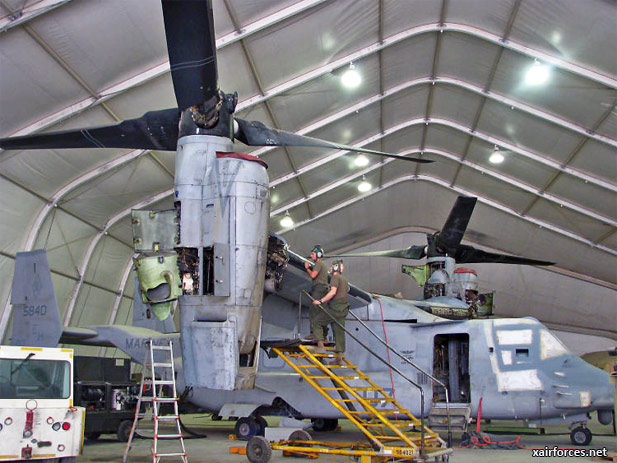
Osprey reputation rebounds in Afghanistan

Once mocked as unsafe, hybrid aircraft passes Afghan war test. Almost four years after the MV-22 Osprey arrived in Afghanistan, trailing its reputation as being dangerous and hard to maintain, the U.S. Marine Corps finally has had an opportunity to test the controversial hybrid aircraft in real war conditions.
The reviews are startlingly positive.
“This is an ugly duckling that turned into a swan,” said Richard Whittle, the author of a book about the craft and a senior scholar at the Wilson Center, a research center in Washington.
The Osprey, which takes off and lands like a helicopter but rotates its engines forward to fly like an airplane, had a star-crossed development period that took more than two decades and included huge cost overruns and crashes that claimed 30 lives. Its deployment to Iraq’s Anbar province from 2007 to 2009, where as combat waned it was used mainly to transport people and cargo, garnered criticism from the Government Accountability Office over maintenance and performance issues.
In Afghanistan, however, the Marines have been able to use it more widely, flying it for everything from freight to hundreds of assaults, where it has carried loads of Marines into or out of landing zones, often under intense fire. It is twice as fast as the helicopter it replaces, the CH-46, and it has substantially greater range. It also can carry more cargo and more than twice as many troops.
A typical use is taking advantage of the aircraft’s speed and range to hook around behind a target for an assault, coming in from an unexpected direction and circumventing the Taliban’s crude air-warning system, which often is a line of watchers with cellphones.
The current version of the Osprey is far safer than earlier ones; it’s now among the safest rotary-wing aircraft in the military. “This isn’t your grandfather’s Osprey,” said Whittle, once a skeptic of the aircraft.
Still, the Osprey is expensive — $122.5 million each, according to Sen. John McCain, R-Ariz., a persistent critic — and it isn’t cheap to maintain, particularly in harsh operating environments such as the extravagantly dusty south of Afghanistan.
Source: CAMP BASTION, Afghanistan, Times Dispatch News - 19 May 2013
Photo: A crew works on an U.S. Marine Corps MV-22 Osprey at Camp Bastion in Afghanistan. The craft takes off and lands like a helicopter but also flies like an airplane. (Photo by McClatchy-Tribune)
(19.05.2013)
|